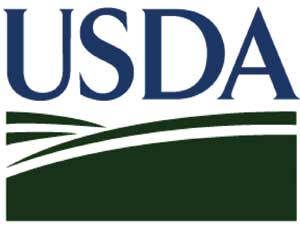USDA: Corn plantings expected to increase 15 percent

May 22, 2007
On March 30, the USDA National Agricultural Statistics Service (NASS) released its annual "Prospective Plantings" report that said corn acreage is expected to increase 15 percent in nearly all corn-producing states this year. According to a survey of more than 86,000 farmers across the United States, producers plan to plant 90.5 million acres this year, which would be the largest volume of corn since 1944, and 12.1 million more acres than were planted in 2006. It is estimated that such acreage could produce a crop in excess of 13 million bushels. Of course, weather conditions could greatly alter that number when it comes time for harvest.
The NASS attributed the increase to growing ethanol demand and strong export markets. For example, the NASS reports that farmers in Illinois, the third-largest ethanol-producing state, intend to plant a record-high 12.9 million acres of corn this spring. North Dakota and Minnesota are also planning to produce record corn crops, adding 910,000 acres and 610,000 acres, respectively. According to forecasts, Iowa continues to show the largest corn acreage at 13.9 million acres, up 1.3 million acres from last year.
The Renewable Fuels Association (RFA) said the anticipated harvest from such estimations would "produce ample corn supplies to economically meet the needs of all the sectors that rely on it." In an official response to the NASS report, RFA President Bob Dinneen said, "These planting intentions also demonstrate the economic importance of ethanol to rural America. Farmers and residents in small communities across the country are now seeing the new jobs and wealth that are being created for millions of rural Americans. Ethanol provides the best value-added opportunity for farmers perhaps in more than a generation."
Byron Weathers, president of the Colorado Corn Growers Association who spoke to EPM while planting corn in Yuma County, Colo., said there could be as much as 5 percent to 10 percent more acres planted in his state than last year. "We've had drought conditions for the past six years in Colorado, but with the early precipitation [in 2007], there could be more dry-land acres going in," Weathers said. Since Colorado is more arid than the Midwest, a large percentage of the corn crop is irrigated. However, a wet winter and spring could persuade Colorado farmers without irrigated land to plant corn.
On the other hand, the wet conditions also put Weathers behind schedule, he said. "We've had about four inches of rain over the last week, and that slowed us down, but we're back in the field now getting going again," he said. "We're only four or five days behind. Other areas could see further delays and that will hurt production, but it should be marginal."
Because of the increase in corn planting, the production of other commodity crops will likely decrease. For instance, the NASS report said soybean production will be down 11 percent from 2006 acres, making it the smallest planted area in over 10 years at 67.1 million acres.
The NASS attributed the increase to growing ethanol demand and strong export markets. For example, the NASS reports that farmers in Illinois, the third-largest ethanol-producing state, intend to plant a record-high 12.9 million acres of corn this spring. North Dakota and Minnesota are also planning to produce record corn crops, adding 910,000 acres and 610,000 acres, respectively. According to forecasts, Iowa continues to show the largest corn acreage at 13.9 million acres, up 1.3 million acres from last year.
The Renewable Fuels Association (RFA) said the anticipated harvest from such estimations would "produce ample corn supplies to economically meet the needs of all the sectors that rely on it." In an official response to the NASS report, RFA President Bob Dinneen said, "These planting intentions also demonstrate the economic importance of ethanol to rural America. Farmers and residents in small communities across the country are now seeing the new jobs and wealth that are being created for millions of rural Americans. Ethanol provides the best value-added opportunity for farmers perhaps in more than a generation."
Byron Weathers, president of the Colorado Corn Growers Association who spoke to EPM while planting corn in Yuma County, Colo., said there could be as much as 5 percent to 10 percent more acres planted in his state than last year. "We've had drought conditions for the past six years in Colorado, but with the early precipitation [in 2007], there could be more dry-land acres going in," Weathers said. Since Colorado is more arid than the Midwest, a large percentage of the corn crop is irrigated. However, a wet winter and spring could persuade Colorado farmers without irrigated land to plant corn.
On the other hand, the wet conditions also put Weathers behind schedule, he said. "We've had about four inches of rain over the last week, and that slowed us down, but we're back in the field now getting going again," he said. "We're only four or five days behind. Other areas could see further delays and that will hurt production, but it should be marginal."
Because of the increase in corn planting, the production of other commodity crops will likely decrease. For instance, the NASS report said soybean production will be down 11 percent from 2006 acres, making it the smallest planted area in over 10 years at 67.1 million acres.
Advertisement
Advertisement
Upcoming Events





